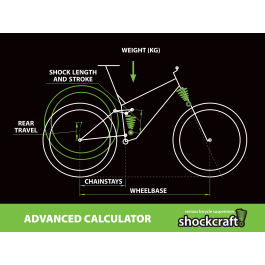Why are the online calculators miles off what manufacturers like Yeti and PUSH in my case recommend?
I understand with some like TFtuned they don't ask enough detail to give an accurate rate...but then you have others like the FOX calculator that asks weight bias, preload, progressivity, leverage rate etc etc...all the basic info you would think you would need to get an accurate rate and yet FOX is still recommending rates 75-100lbs less than Yeti and PUSH. Is this because Yeti and PUSH err on the side of firmer and less sag due to their racing intentions or are the calculators from the likes of FOX just straight up inaccurate. Or is it because of different leverage curve shapes?
For example PUSH recommends me 450lbs...Yeti recommends 425lbs....I'm current running 411lbs and prefer that to both and FOX and TF tuned calcs are recommending in the region of 350lbs or less depending on sag.
So who is right?
I understand with some like TFtuned they don't ask enough detail to give an accurate rate...but then you have others like the FOX calculator that asks weight bias, preload, progressivity, leverage rate etc etc...all the basic info you would think you would need to get an accurate rate and yet FOX is still recommending rates 75-100lbs less than Yeti and PUSH. Is this because Yeti and PUSH err on the side of firmer and less sag due to their racing intentions or are the calculators from the likes of FOX just straight up inaccurate. Or is it because of different leverage curve shapes?
For example PUSH recommends me 450lbs...Yeti recommends 425lbs....I'm current running 411lbs and prefer that to both and FOX and TF tuned calcs are recommending in the region of 350lbs or less depending on sag.
So who is right?







